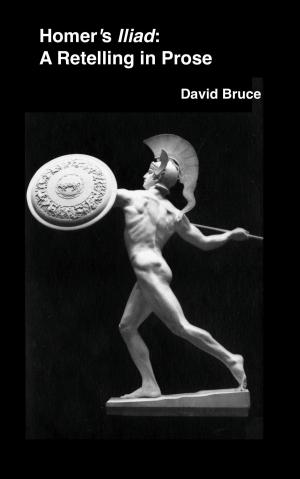The Kindest People: Heroes and Good Samaritans (Volume 5)
Nonfiction, Health & Well Being, Self Help, Self Improvement, Motivational, Biography & Memoir| Author: | David Bruce | ISBN: | 9781476211688 |
| Publisher: | David Bruce | Publication: | May 28, 2012 |
| Imprint: | Smashwords Edition | Language: | English |
| Author: | David Bruce |
| ISBN: | 9781476211688 |
| Publisher: | David Bruce |
| Publication: | May 28, 2012 |
| Imprint: | Smashwords Edition |
| Language: | English |
This book contains 250 stories about heroic rescues, good deeds, and kindness, including these: 1) Harry Roesch, aka Harry the Hammer, was the fix-it man of his neighborhood: Friendship Heights in Washington D.C. He helped lots of elderly widows stay in their homes by doing such things as installing railings. He fixed problems such as leaky faucets and loose banisters, often charging only for parts. He did appreciate such gifts as a bottle of good bourbon. He also did other good deeds such as putting out water each day for dogs. Harry’s wife, Nancy Riker, said, “He’s always been the neighborhood handyman.” She added, “He tended to every forgotten space in his part of the city. He made it beautiful.” He was good at what he did. Nancy said, “He knew how to do it right. He was distressed when contractors did it wrong. … He wanted it fair. That was his contribution to humanity.” In 2010, Harry learned that he had cancer. In February 2012, at a Valentine’s Day party, he looked ill. Bart Stichman, a neighbor, wanted to honor Harry, so he created a sign with a hammer and a legend that read, “HARRY WAS HERE.” He ordered 10 signs, and then, due to demand, he ordered 14 more signs. Neighbors on whose houses Harry had worked put the signs in their yards. Nancy said, “They felt connected to him having a sign in their front yard. It was for Harry, too, like it was for them.” Some people thought that Harry must be a politician who was running for office. Shortly before Harry died, a friend pushed Harry, who was in a wheelchair, through the neighborhood to look at the signs. One sign was a little crooked, and Harry got out of the wheelchair and straightened it. Nancy said, “He just liked things to be right.” On 16 March 2012, Harry died at age 67. Neighbors Ken and Sharon Hurley added a piece of black ribbon to each of the “HARRY WAS HERE” signs. Washington Post columnist John Kelly wrote, “‘HARRY WAS HERE,’ the signs read. Now Harry was gone. But he wasn’t really. Wherever someone realizes that it isn’t good fences that make good neighbors, it’s good people, Harry is there. And he always will be.” 2) It is worth noting that science is a moral and ethical undertaking. Science-fact and -fiction writer Isaac Asimov pointed out in an interview with Bill Moyers, “There is a morality in science that is further advanced than anywhere else. If you can find a person in science, and it happens—scientists are only human—who has faked his results, who has lied as far as his findings are concerned, who is trying to steal the work of another, who has done something scientists consider unethical, his scientific reputation is ruined, his scientific life is over, and there is no forgiveness.” Most scientists, fortunately, are honest. Mr. Asimov pointed out that in 1900, three scientists—Hugo DeVries (a Dutchman), Charles Carrinse (a German), and Eric von Chermark (an Austrian)—studied genetics (separately, not as a team) and worked out the laws of genetics. All three then studied the literature of genetics to find out what had been learned before. All three discovered that in 1867 Gregor Mendel had discovered the laws of genetics, but his discoveries had been ignored. All three gave credit to Mr. Mendel and reported their own findings as confirmations of Mr. Mendel’s work. Only Mr. DeVries is well known today—because of his work in studying mutations. Mr. Asimov pointed out that “as far as the discovery of genetics is concerned, Mendel gets all the credit. And they knew at the time that this would happen, but they did it.”
This book contains 250 stories about heroic rescues, good deeds, and kindness, including these: 1) Harry Roesch, aka Harry the Hammer, was the fix-it man of his neighborhood: Friendship Heights in Washington D.C. He helped lots of elderly widows stay in their homes by doing such things as installing railings. He fixed problems such as leaky faucets and loose banisters, often charging only for parts. He did appreciate such gifts as a bottle of good bourbon. He also did other good deeds such as putting out water each day for dogs. Harry’s wife, Nancy Riker, said, “He’s always been the neighborhood handyman.” She added, “He tended to every forgotten space in his part of the city. He made it beautiful.” He was good at what he did. Nancy said, “He knew how to do it right. He was distressed when contractors did it wrong. … He wanted it fair. That was his contribution to humanity.” In 2010, Harry learned that he had cancer. In February 2012, at a Valentine’s Day party, he looked ill. Bart Stichman, a neighbor, wanted to honor Harry, so he created a sign with a hammer and a legend that read, “HARRY WAS HERE.” He ordered 10 signs, and then, due to demand, he ordered 14 more signs. Neighbors on whose houses Harry had worked put the signs in their yards. Nancy said, “They felt connected to him having a sign in their front yard. It was for Harry, too, like it was for them.” Some people thought that Harry must be a politician who was running for office. Shortly before Harry died, a friend pushed Harry, who was in a wheelchair, through the neighborhood to look at the signs. One sign was a little crooked, and Harry got out of the wheelchair and straightened it. Nancy said, “He just liked things to be right.” On 16 March 2012, Harry died at age 67. Neighbors Ken and Sharon Hurley added a piece of black ribbon to each of the “HARRY WAS HERE” signs. Washington Post columnist John Kelly wrote, “‘HARRY WAS HERE,’ the signs read. Now Harry was gone. But he wasn’t really. Wherever someone realizes that it isn’t good fences that make good neighbors, it’s good people, Harry is there. And he always will be.” 2) It is worth noting that science is a moral and ethical undertaking. Science-fact and -fiction writer Isaac Asimov pointed out in an interview with Bill Moyers, “There is a morality in science that is further advanced than anywhere else. If you can find a person in science, and it happens—scientists are only human—who has faked his results, who has lied as far as his findings are concerned, who is trying to steal the work of another, who has done something scientists consider unethical, his scientific reputation is ruined, his scientific life is over, and there is no forgiveness.” Most scientists, fortunately, are honest. Mr. Asimov pointed out that in 1900, three scientists—Hugo DeVries (a Dutchman), Charles Carrinse (a German), and Eric von Chermark (an Austrian)—studied genetics (separately, not as a team) and worked out the laws of genetics. All three then studied the literature of genetics to find out what had been learned before. All three discovered that in 1867 Gregor Mendel had discovered the laws of genetics, but his discoveries had been ignored. All three gave credit to Mr. Mendel and reported their own findings as confirmations of Mr. Mendel’s work. Only Mr. DeVries is well known today—because of his work in studying mutations. Mr. Asimov pointed out that “as far as the discovery of genetics is concerned, Mendel gets all the credit. And they knew at the time that this would happen, but they did it.”















